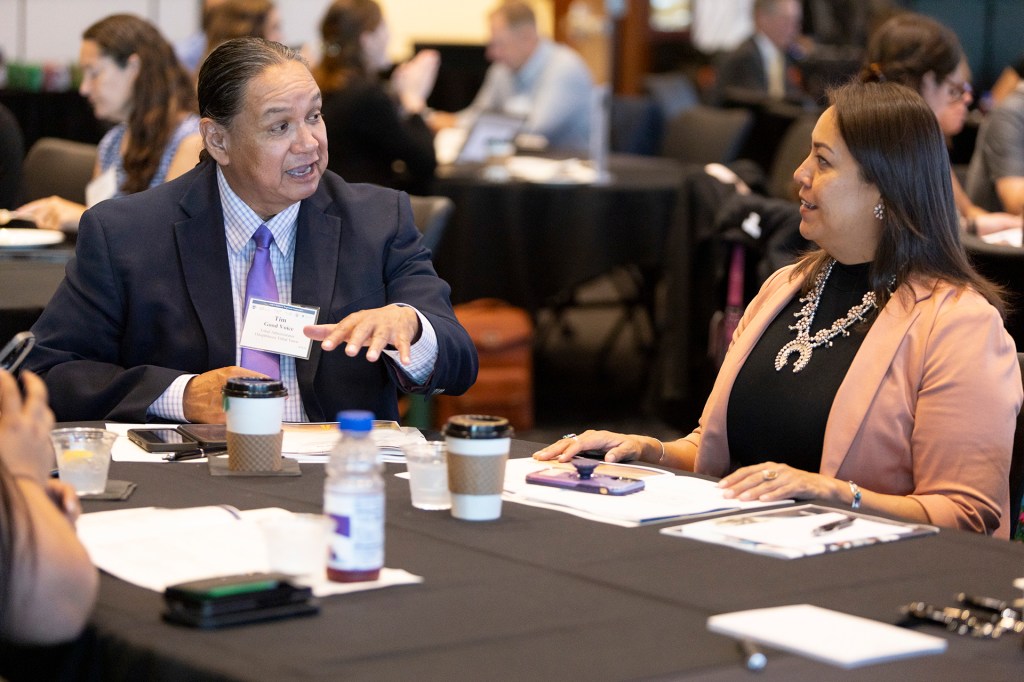Small businesses in the US have had a rough four-and-a-half years.
In 2020, job and revenue growth reported by small businesses was at a historic low, largely due to business disruptions and closures caused by the COVID-19 pandemic. In the months and years following, low- and no-interest loan programs—such as the Paycheck Protection Program and the Economic Injury Disaster Loan (EIDL) program, loans which some businesses are still paying off—injected billions into this critical segment of the economy.
Another pandemic-era program, smaller in magnitude, is still in effect today for states and tribal governments looking to support small businesses. The State Small Business Credit Initiative, or SSBCI, is a 10-year, nearly $10 billion program administered by the US Treasury that provides recipient jurisdictions with funding for two things: credit and investment programs for existing small businesses and start-ups (Capital Program); and technical assistance to small businesses applying for SSBCI funding and other government small business programs (Technical Assistance Grant Program).
The SSBCI program was first used to help small businesses recover from the Great Recession as part of the Small Business Jobs Act of 2010. A decade later, SSBCI (“SSBCI 2.0”) was reauthorized and amended by Congress as part of the American Rescue Plan of 2021 and was scaled to meet even greater demand, especially among small businesses that are underserved.
Such loan programs support the vital role small businesses play in the US economy, with nearly half of all private-sector workers employed by small firms, or those with fewer than 500 employees.

Photo courtesy of Gary Barber, Federal Reserve Bank of Kansas City
Leveraging the SSBCI to get more capital to small businesses
Today, growth in new business applications has maintained record highs since 2021. Growth is particularly strong in Midwest states. Nevertheless, revenue and credit approvals reported by small businesses continue to lag pre-pandemic levels. It’s unclear how much of the growth in new business applications is driven by necessity, a desirable opportunity, or both.
Two things are clear. First, that the performance of new and existing small businesses has still not recovered to pre-COVID-19 levels. And second, loan programs continue to be in demand, particularly among employer firms owned by people of color, according to the Small Business Credit Survey. Credit access remains key to many small businesses’ success, yet gender, racial, and regional disparities persist.
All this might explain a packed room in Kansas City on August 26 and 27, where some 200 people gathered for the 2024 SSBCI Midwest Regional Conference. The event, co-facilitated by the Treasury and the Federal Reserve Banks of Kansas City, St. Louis, Dallas, and Chicago, provided an opportunity for community development professionals to learn more about the program from the Treasury’s SSBCI staff—and from peers across the region. The SSBCI program is admittedly complex, offering a variety of programs, often with various implementation strategies across jurisdictions. Some states have experience with SSBCI through its first iteration, whereas other states do not.
SSBCI by the numbers
To date, according to preliminary US Treasury analyses of participating jurisdictions’ 2022 and 2023 annual reports and quarterly data:
- Nationally, since the first transactions in 2022, participating jurisdictions have expended more than $750 million of $8.7 billion approved applications for capital programs, supporting 3,600 small businesses.
- Almost a third of the total allocation nationwide went to participating Midwest jurisdictions. In addition, US tribal governments in participating Midwest states received another $91 million.
- Sixty-nine percent of transactions nationally support underserved businesses. Forty-three percent of transactions support minority-owned businesses, and thirty-two percent of transactions support businesses owned by women.
- The Loan Participation Program (LPP) is the largest SSBCI capital program used across tribal, territory, and state jurisdictions, with $2.7 billion allocated to LPP operations—amounting to $826 million in Midwestern jurisdictions.
- On average across lending programs, jurisdictions expect to leverage $10 of private investment for every $1 of SSBCI capital program funding.
Early wins and overcoming challenges in Midwest states and jurisdictions
One of the challenges for states and lenders has been navigating an admittedly complex suite of credit and investment programs within the SSBCI, including the LPP (mentioned above), Loan Guarantee Program, Capital Access Program, Collateral Support Program (CSP), and Equity/Venture Capital Program. The numerous deployment models allow states to tailor solutions to meet the needs of small businesses in their states, with states adhering their program designs to definitions and reporting guidelines provided by the Treasury.
Take, for example, Kansas. The state’s loan program has supported 130 small businesses and deployed $50 million to match private capital. Financial institutions like banks and Community Development Financial Institutions (CDFIs) provide starter loans for businesses led by minorities, women, and people who are economically disadvantaged. The state has also ramped up hiring to increase outreach and engagement.
In Illinois, the State Department of Commerce and Economic Opportunity oversees its SSBCI-supported programs. Under its Advantage Illinois brand, the state has retained its LPP and added a new Loan Guarantee Program. These credit support programs focus on marketing, terms, and eligibility for lenders. More than 75 lenders in the state are participating in the program, with a guarantee of up to $2 million per loan.

Photo courtesy of Gary Barber, Federal Reserve Bank of Kansas City
Ohio focused its Collateral Support Program on underserved for-profit Ohio businesses with fewer than 250 employees, with the goal of covering shortfalls that would otherwise prevent businesses from securing financing. The CSP received the fourth-largest allocation of the participating Midwest jurisdictions. With just nine percent of the funds expended to date, one speaker noted they are “still in start-up mode.” Only two jurisdictions participating in the CSP, Michigan and New Mexico, have expended at least half of their allocation.
Michigan has deployed more than $49 million, or 69 percent, of the total SSBCI funding it has received thus far. The state has had 32 transactions in the manufacturing sector alone, the second most of any state.
Most of the programs’ funds have yet to be expended. Given the long tail of SSBCI, establishing connections early and often to other programs in other states is particularly important …
Takeaways
At the event, the power of connection was clear. Lenders and administrators in local jurisdictions shared their decision-making processes on which types of SSBCI programs they chose to offer, the industries they focus on, and the rules they established for eligibility. They exchanged perspectives about their programs’ respective rollouts and the challenges and opportunities. Speakers highlighted examples of collaboration across states and tribal governments, ranging from opportunities in the manufacturing sector and lender engagement to opportunities to invest in underserved markets.
Attendees are also in this for the long haul. Most of the programs’ funds have yet to be expended. Given the long tail of SSBCI, establishing connections early and often to other programs in other states is particularly important to navigate the complexities of implementation and leverage best practices.
A lot has been learned in the 10+ years since SSBCI was first launched in 2010. With the authorization of SSBCI 2.0, local administrators have adjusted the design of their current programs, be it in relation to the structure of lending products, such as modifying the interest rate or the private match requirement for underserved businesses, or in relation to more general goals such as lender outreach. To this end, implementing jurisdictions discussed their ongoing efforts to build relationships and mutual trust with lenders by explaining SSBCI benefits and use-cases, educating on compliance, and prioritizing SSBCI as a resource for financing partners.
Panelists also conveyed that SSBCI has resulted in credit transactions that would not have occurred without this funding. This is consistent with SSBCI’s Capital Program’s aim to facilitate transactions by each program sharing lending or equity financing risks with lenders or investors. As panelists noted, most companies require outside capital, yet recent lending conditions have made accessing capital difficult for many businesses. SSBCI is a mechanism to encourage private-sector lending to small businesses.

Photo courtesy of Gary Barber, Federal Reserve Bank of Kansas City
More work to do
Data and conversations at the meeting point to a timely opportunity to help ensure that SSBCI realizes its potential. Convenings like this one, which brought together administrators, lenders, and other experts to share experiences with implementing the SSBCI program, may help the program both keep the upward trajectory in post-COVID-19 employment and revenue and encourage a continued focus on getting capital to underserved markets.
To assess progress, we must continue to track credit access across firm types and firm ownership, including in tribal governments, smaller cities, and rural areas. Thanks to data sources like the Small Business Credit Survey and partner engagements like the SSBCI Midwest convening, we can continue to make inroads in both understanding and addressing these gaps. These data, combined with SSBCI-enabled tracking of resources and outcomes, can help us measure whether and to what degree small businesses have achieved a full, fair, and equitable recovery.
References from the Treasury
References from the Federal Reserve
Additional Resources
The views expressed here are our own and not necessarily those of the Federal Reserve Bank of Cleveland, Federal Reserve Bank of Chicago, or the Federal Reserve System.









